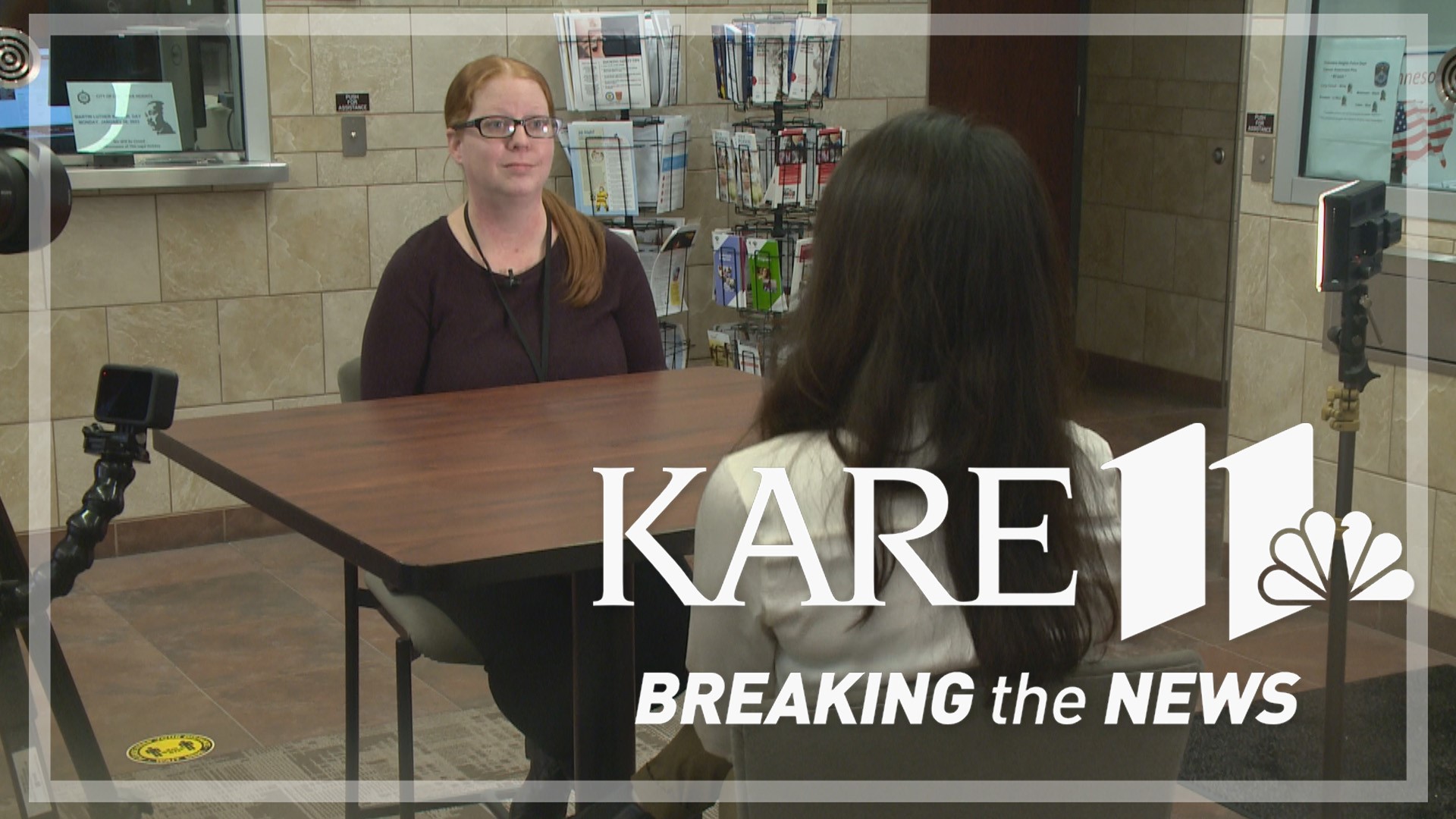COLUMBIA HEIGHTS, Minn. — Chances are, Columbia Heights residents who have encountered a squad car have met Eileen Crosby.
"LICSW is the initials — it's licensed independent clinical social worker," Crosby said. "And I am the embedded mental health professional here."
Crosby is one of two social workers who work for the Columbia Heights Police Department.
"I go on basically any call that's safe," Crosby said. "So if there is a concern there might be a firearm, or an unsafe situation, officers will go in first and let me know when it's safe for me to go in. Otherwise, I'm right along with them, responding with them."
Crosby says she feels like people have received her positively on most calls.
"I think it's nice when someone not in uniform, and somebody who is an expert in mental health can really address the mental health concerns that people sometimes have," she said.
Captain Matt Markham, who oversaw the launch of the social worker program, said despite the training that officers go through for crisis intervention, the work a social worker can do is vastly different than what an officer can do.
"Our officers go through 40 hours of crisis intervention training, and then we have continuing education on it, and they do a pretty good job," Markham said. "But I think on the level we're seeing now, in some of the things the community needs, I think the biggest part is just connecting people to resources. So I think social workers are far better equipped to handle these calls."
Crosby said in the year she has been with the department, she has made contacts with nearly 2,000 people and has served 457 individuals.
Since the program started, Canvas Health, which employs Crosby, saw a 70% increase in calls from Columbia Heights; meaning that amount of people ended up directly connecting to resources without having to call 911.
Markham said the most remarkable difference came in the form of reduction of use of force during transport holds, which happen when an individual needs help, but refuses to go into an ambulance.
"That creates a situation when an officer has to use force to get that person in an ambulance, and we were seeing that a lot of our use of force was these transport holds," he explained. "'How can we reduce that and how can we reduce some of the burden from the officers?' And the social worker was the perfect program for that."
Markham said the transport hold sign-offs are not given to the social workers, if they happen to be on the call. Crosby and her counterpart, who works a different shift, are responsible for determining whether the individual in crisis needs to be sent to the hospital. If they do, they are the ones to green light it.
This slight change has led to a big shift, even just in the first six months of the program.
"Out of 104 calls, use of force was only used on one transport hold," Markham said.
Crosby said she hopes she can continue to have a positive impact on the community, even if people aren't open to her on the first go-around.
"I don't come on a scene with any agenda," she said. "I come on to see what is going on and how I can help. That might mean just being a listening ear, getting people connected to services, I really just try to be that person that is there to fill the gaps. Sometimes that means the first four times that we come out to a scene, somebody doesn't want to talk to me, and that's me saying, 'It's OK.' And maybe that fifth time they will want to engage with me."
Markham explained the program was possible due to a Department of Justice grant they received back in 2021. The grant will carry them through early spring of 2024. Markham said he hopes the program will continue after the grant.
Watch more Breaking The News:
Watch all of the latest stories from Breaking The News in our YouTube playlist:

